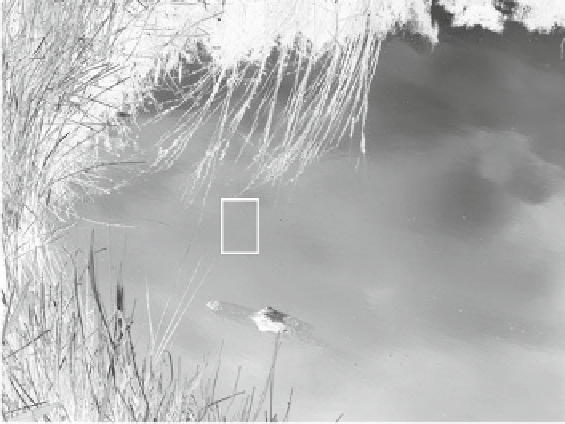Environmental Engineering Reference
In-Depth Information
biomass, which leads to an increase in herbivore biomass (as well as allowing the
herbivore community to shift towards larger zooplankton, which are preferential
prey of planktivorous fish), and thus to a decrease in phytoplankton biomass.
Depending on certain ecological conditions and for certain times of the year the
length of the food chains can vary which is paradigmatically depicted in Fig.
18.2
.
The ability of predatory fish to control prey populations is well-documented.
This can cause suppression of the forage species, which affects species composition
and size structure of the zooplankton community, and in turn influences the
phytoplankton community. Important earlier work (e.g. Brooks and Dodson
1965) examined the impact of fish predation on zooplankton size structure, showing
that the planktivorous fish eliminated the large zooplankton (daphnids), which
allowed algae to reach high concentrations. The trophic cascades typically studied
by limnologists are similar, but usually extend from piscivorous fish down to
phytoplankton. To explain the concept in more detail, consider a simple food web
for a typical small lake in northern U.S., as shown in Fig.
18.3
. You will note that
this web is not quite chainlike, so the trophic levels are not perfectly distinguished.
There is much experimental evidence that consumers in this web can control prey.
Changes in large piscivorous fish densities (bass, pike, or salmonids) have been
shown to cause changes in vertebrate planktivore populations (e.g. bluegills, sun-
fish, yellow perch). Large numbers of vertebrate planktivores tend to reduce large
crustaceous zooplantkon and invertebrate planktivores. In the absence of vertebrate
planktivores, invertebrate planktivores deplete small crustaceous zooplankton and
rotifers. The effects of zooplankton on phytoplankton are more complex, because
zooplankton help recycle nutrients (good for phytoplankton) as well as feed on
C
H
+-
P
H
+
-
+-
P
P
Fig. 18.2 Conceptual Model of Trophic Cascades.
P
Producer,
H
Herbivore,
C
Carnivore.
The possible impact between the levels is depicted by the signs
















